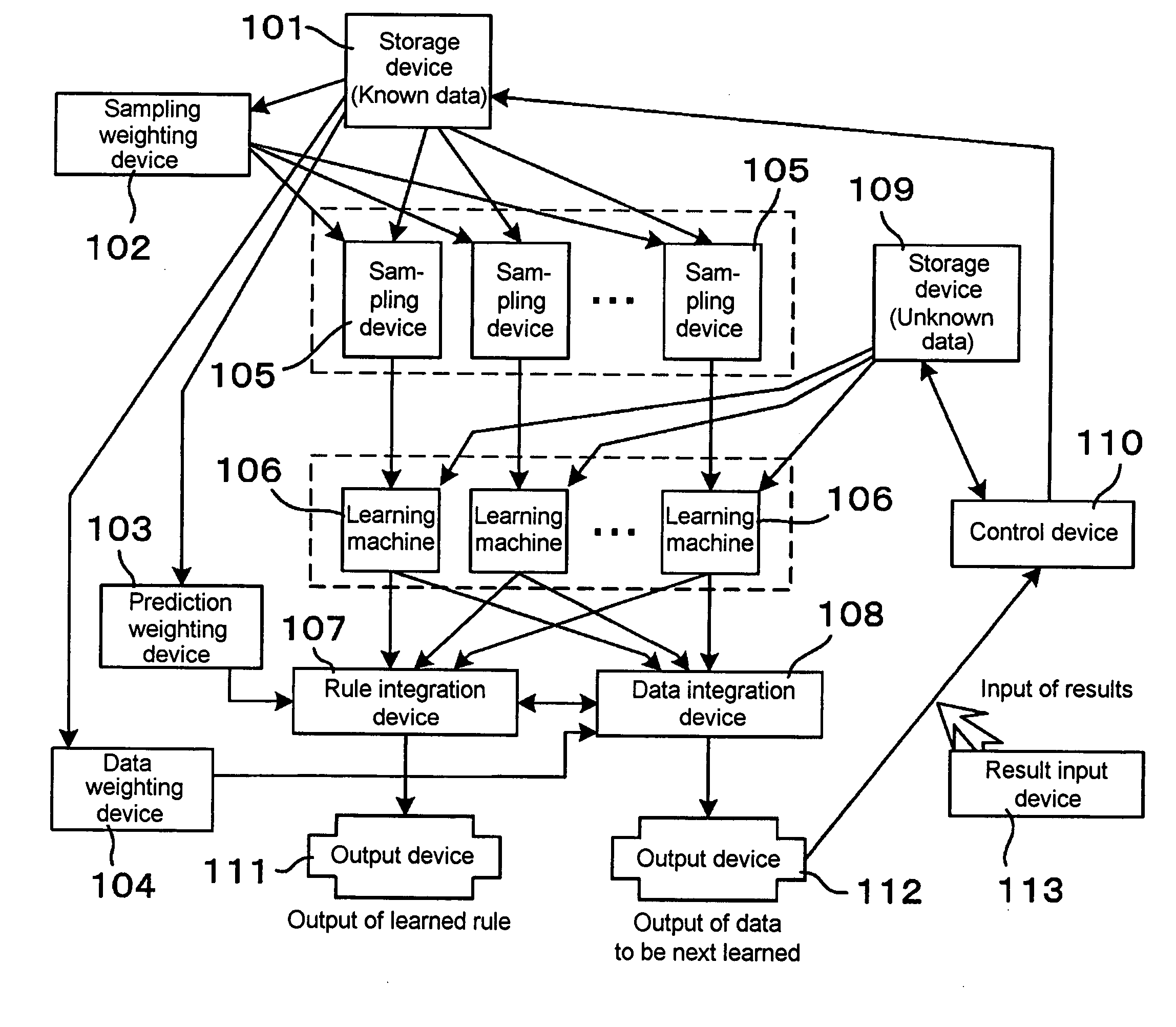Active learning method and system
a learning system and active learning technology, applied in the field of active learning methods and active learning systems, can solve the problems of large number of similar data delivered, inability to control the intent of users, and inability to obtain correct answers, so as to improve mining accuracy, improve the covering rate, and increase the weight
- Summary
- Abstract
- Description
- Claims
- Application Information
AI Technical Summary
Benefits of technology
Problems solved by technology
Method used
Image
Examples
first embodiment
[0035]FIG. 1 is a block diagram illustrating the configuration of an active learning system according to the present invention.
[0036]FIG. 2 is a flow chart illustrating a process of an active learning method using the system illustrated in FIG. 1.
[0037]FIG. 3A is a graph showing hit rates for comparing the learning accuracy between the active learning method according to the system illustrated in FIG. 1 and a conventional active learning method.
[0038]FIG. 3B is a graph showing ROC curves for comparing the learning accuracy between the active learning method according to the system illustrated in FIG. 1 and the conventional active learning method.
[0039]FIG. 3C is a graph showing transitions in correct answer rate for comparing the learning accuracy between the active learning method according to the system illustrated in FIG. 1 and the conventional active learning method.
second embodiment
[0040]FIG. 4 is a block diagram illustrating the configuration of an active learning system according to the present invention.
[0041]FIG. 5 is a graph showing ROC curves for comparing the learning accuracy between the active learning method according to the system illustrated in FIG. 4 and the conventional active learning method.
third embodiment
[0042]FIG. 6 is a block diagram illustrating the configuration of an active learning system according to the present invention.
[0043]FIG. 7 is a graph showing ROC curves for comparing the learning accuracy between the active learning method according to the system illustrated in FIG. 6 and the conventional active learning method.
PUM
 Login to View More
Login to View More Abstract
Description
Claims
Application Information
 Login to View More
Login to View More - R&D
- Intellectual Property
- Life Sciences
- Materials
- Tech Scout
- Unparalleled Data Quality
- Higher Quality Content
- 60% Fewer Hallucinations
Browse by: Latest US Patents, China's latest patents, Technical Efficacy Thesaurus, Application Domain, Technology Topic, Popular Technical Reports.
© 2025 PatSnap. All rights reserved.Legal|Privacy policy|Modern Slavery Act Transparency Statement|Sitemap|About US| Contact US: help@patsnap.com



